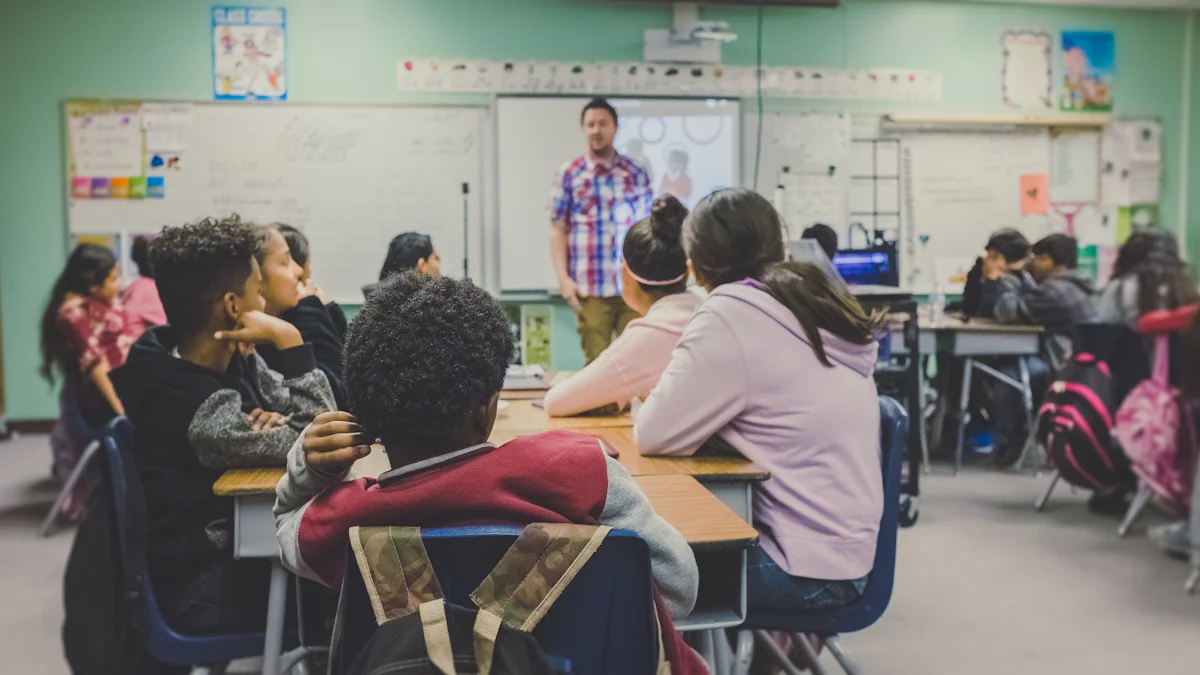What Inclusive Education Means for Modern Classrooms

Inclusive education means teaching all students together, regardless of their abilities or backgrounds. This approach supports diverse learners and promotes equity in education. Every child feels important and included. Inclusive education is crucial today as it helps students learn empathy, tolerance, and understanding. The goal is to provide equal opportunities to all learners, improving both social and academic outcomes. By creating an inclusive classroom, teachers can foster a supportive learning environment for everyone.
Understanding Inclusive Education
Definition and Principles
Core principles of inclusive education
Inclusive education means teaching all students together, no matter their abilities or backgrounds. This way helps different learners and makes education fair. Key ideas include access, participation, and teamwork. Access means all students can use the curriculum and learning tools. Participation means every student joins in classroom activities. Teamwork involves working with students, parents, and teachers to build a helpful environment.
Historical context and evolution
The history of inclusive education has important moments. The Warnock Report, published in 1978, was a big change. This report led to the 1981 Education Act in the UK. The Salamanca Conference in 1994 pushed inclusive education further. This conference created the Salamanca Statement for Special Needs Education. These events have shaped today's inclusive education practices.
Equity in Education
Definition of equity in education
Equity in education means giving fair chances to all students. It focuses on meeting each student's needs instead of treating everyone the same way. Each student gets the help they need to succeed. Equity ensures that personal or social factors don't block educational success.
Differences between equity and equality
Equity and equality are not the same thing. Equality means treating everyone equally. Equity means giving each student what they need to do well. For example, equality gives the same resources to all students, while equity gives more help to those who need it most. Equity aims to make things fair for all learners.
Importance of equity in inclusive education
Equity is very important in inclusive education. Without equity, some students might fall behind their classmates. Equity makes sure all students get the tools and support they need. This creates a feeling of belonging and acceptance among students. An equitable classroom encourages respect and understanding among everyone. Teachers must focus on equity to make truly inclusive classrooms.
Making a Classroom Inclusive
Important Parts
Physical Setup
An inclusive classroom needs a good physical setup. Teachers should arrange desks for group work. Clear paths help all students, including those with disabilities, move easily. Visual aids and touchable materials help different learners. Quiet areas give students a break from noise.
Lessons and Teaching
Inclusive lessons meet the needs of all students. Teachers should use different ways to teach to reach everyone. Lessons should include materials showing various cultures and views. This helps students understand and care about others. Different teaching methods ensure that every student does well.
Classroom Atmosphere
A positive classroom atmosphere is key for inclusive learning. Teachers should encourage respect among students. Group activities help students learn from each other. Celebrating different backgrounds makes everyone feel they belong. Involving parents and the community strengthens support for students.
Ways to Promote Inclusivity
Varied Teaching Methods
Varied teaching methods meet the needs of different learners. For example, diagrams help visual learners, while talks help auditory learners. Hands-on tasks engage those who learn by doing. Using varied methods ensures all students can learn well.
Universal Learning Design (UDL)
Universal Learning Design (UDL) helps create inclusive lessons. UDL guides teachers in designing lessons for all learners. This includes using text, audio, and video materials to suit different preferences. UDL ensures all students can fully join.
Team Teaching
Team teaching improves inclusive education. General and special education teachers work together to support all learners better. Peer tutoring lets students help each other, building community spirit. Group projects encourage teamwork and learning from others' views.
Helping Different Learners
Finding Different Needs
Kinds of diversity in class
Classrooms have students from many backgrounds and abilities. Some have physical disabilities, others have learning problems. Cultural differences are important too. Students come from different races, languages, and families. Money situations also add to the mix. Each student brings their own experiences to school.
Ways to find needs
Teachers need to know what students need help with. Watching students shows how they learn and act. Tests give information on schoolwork levels. Teachers can use quizzes and classwork for more clues. Talking with parents gives a view of home life. Working with experts helps find out the exact needs.
Giving Help and Tools
Special Education Plans (IEPs)
Special Education Plans (IEPs) help students with specific needs. IEPs list goals and ways to support each student. Teachers, parents, and experts make these plans together. They check them often to keep them useful. IEPs help students do their best in class.
Helpful technologies
Helpful technologies aid different learners. Tools like speech-to-text software help with writing issues. Screen readers let blind students read digital stuff. Interactive boards engage all types of learners. Tablets and apps give personal learning options. These tools make learning easier for everyone.
Social and emotional help
Social and emotional help is key in inclusive schools. Teachers should make a safe, friendly place for all kids. Group work builds friendships and teamwork skills. Counsellors guide kids through tough feelings or problems at home or school Peer mentors create a sense of belonging among classmates Social support boosts overall happiness.
Benefits of Inclusivity in Education

Academic Benefits
Better Grades
Inclusive education helps students get better grades. Students in these classrooms do well in their studies. A mix of different learners makes students more active. Teachers use many ways to teach, helping everyone learn better.
Improved Thinking Skills
Inclusive education improves thinking skills. Seeing different views makes students think hard. They learn to look at things from all sides. This helps them solve problems well. Good thinking skills help with school and life challenges.
Social and Emotional Benefits
Better Social Skills
Inclusive education builds social skills. Students meet peers from various backgrounds. These meetings teach them to talk well with others. Group work teaches teamwork and cooperation. Social skills learned in school help for life.
Feeling of Belonging
Inclusive education makes students feel they belong. Feeling included makes them join school activities more. In 2018, one in five 15-year-olds felt like outsiders at school, says PISA. Inclusive practices reduce this feeling, especially for poorer students. Feeling they belong boosts happiness and success.
Long-term Benefits
Ready for Diverse Jobs
Inclusive education gets students ready for diverse jobs. Modern jobs value diversity and inclusion a lot. Students who are used to inclusivity adapt better at work with different people around them, giving them an edge in their careers.
Promotes Empathy and Understanding
Inclusive education promotes empathy and understanding among students by teaching them to appreciate differences and similarities between people, leading to better relationships and a more harmonious society while reducing prejudice.
Inclusive education is very important in today's classrooms. Teachers need to use this method so every student feels special and included. Inclusivity helps students learn to care about others. Kim, a school expert, says, "Inclusive education gives all students equal chances, no matter their abilities or backgrounds."
Rose, another expert, says, "By aiming for fair practices, schools can stop stereotypes and build equality." Hensley and Robey say, "An inclusive system helps all students succeed in life and work."
Teachers and leaders must work together to use inclusive methods. This teamwork will make a helpful place for all students to learn.
See Also
Can Diversity Unlock a Welcoming Educational Atmosphere?
Developing Student-Focused Learning: Enhancing Education's Enjoyment and Value
Cutting-Edge Teaching Approaches: Imaginative Educational Strategies for 2024
Transforming Education: The Emergence of Contemporary Tutoring
Boosting Student Voices: Breaking Down Obstacles to Encouraging Expression and Confidence in School

